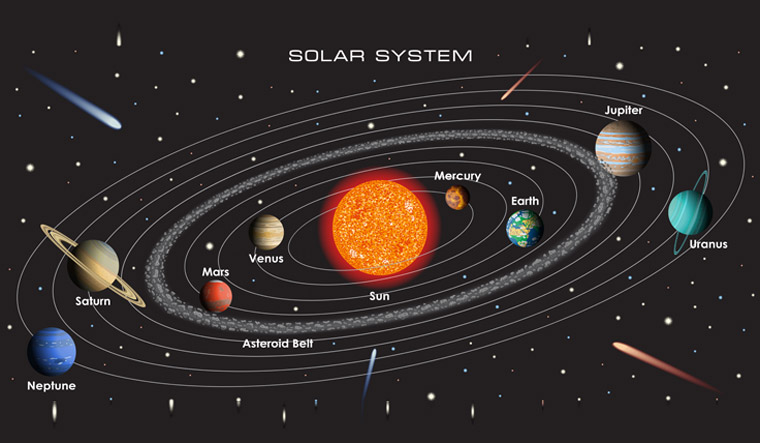
Type: Yellow Dwarf (G2V)
Diameter: 1,392,684 km
Equatorial Circumference: 4,370,005.6 km
Mass: 1.99 × 10^30 kg (333,060 Earths)
Surface Temperature: 5,500 °C
Polar Diameter: 48,682 km
Mass: 1.02 × 10^26 kg (17 Earths)
Moons: 14 (Triton)
Rings: 5
Orbit Distance: 4,498,396,441 km (30.10 AU)
Orbit Period: 60,190 days (164.8 years)
Surface Temperature: -201 °C
Discovery Date: September 23rd 1846
Polar Diameter: 108,728 km
Mass: 5.68 × 10^26 kg (95 Earths)
Moons: 82 (Titan, Enceladus, Iapetus & Rhea)
Rings: 30+ (7 Groups)
Orbit Distance: 1,426,666,422 km (9.58 AU)
Orbit Period: 10,756 days (29.5 years)
Surface Temperature: -139 °C
First Record: 8th century BC
Recorded By: Assyrians
Polar Diameter: 6,752 km
Mass: 6.39 × 10^23 kg (0.11 Earths)
Moons: 2 (Phobos & Deimos)
Orbit Distance: 227,943,824 km (1.38 AU)
Orbit Period: 687 days (1.9 years)
Surface Temperature: -87 to -5 °C
First Record: 2nd millennium BC
Recorded By: Egyptian astronomers
Mass: 4.87 × 10^24 kg (0.82 Earths)
Moons: None
Orbit Distance: 108,209,475 km (0.73 AU)
Orbit Period: 225 days
Surface Temperature: 462 °C
First Record: 17th century BC
Recorded By: Babylonian astronomers
Mass: 3.29 × 10^23 kg (0.06 Earths)
Moons: None
Orbit Distance: 57,909,227 km (0.39 AU)
Orbit Period: 88 days
Surface Temperature: -173 to 427°C
First Record: 14th century BC
Recorded By: Assyrian astronomers
Polar Diameter: 12,714 km
Mass: 5.97 × 10^24 kg
Moons: 1 (The Moon)
Orbit Distance: 149,598,262 km (1 AU)
Orbit Period: 365.24 days
Surface Temperature: -88 to 58°C
Polar Diameter: 133,709 km
Mass: 1.90 × 10^27 kg (318 Earths)
Moons: 79 (Io, Europa, Ganymede & Callisto)
Rings: 4
Orbit Distance: 778,340,821 km (5.20 AU)
Orbit Period: 4,333 days (11.9 years)
Surface Temperature: -108°C
First Record: 7th or 8th century BC
Recorded By: Babylonian astronomers
Polar Diameter: 133,709 km
Mass: 1.90 × 10^27 kg (318 Earths)
Moons: 79 (Io, Europa, Ganymede & Callisto)
Rings: 4
Orbit Distance: 778,340,821 km (5.20 AU)
Orbit Period: 4,333 days (11.9 years)
Surface Temperature: -108°C
First Record: 7th or 8th century BC
Recorded By: Babylonian astronomers